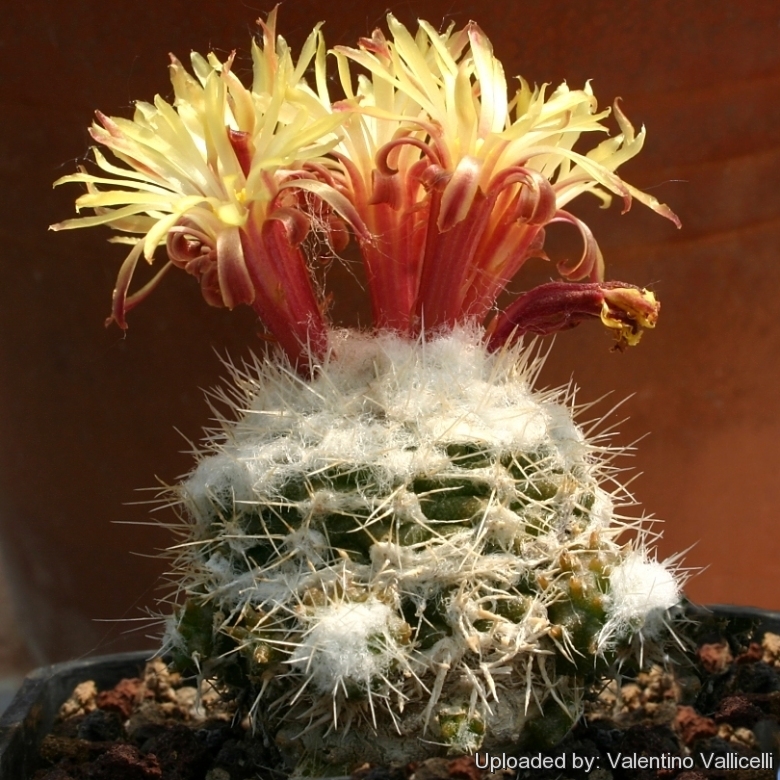
Eriosyce laui Photo by: Valentino Vallicelli
It is a very peculiar cactus that looks like nothing else. Its relationships among the cacti remain unclear, and the monotypic genus Rimacactus has been erected for it.
Origin and Habitat: Endemic to Northern Chile, II Región (Antofagasta): South of Tocopilla, 5 km from the costal line, at an altitude of about 400 m. (Lüthy 1994).
Habitat: This enigmatic species is known only from a small barren area (less than 10 square km) in the costal desert of Tocopilla, where hardly any other plants at all are capable of surviving.
In this area there is very little rain but frequent coastal fog, which provides a significant part of the water needs. This species is extremely rare. The few populations known are fragmented (some of them with less than 10 individuals). The plants grow multi-headed, mainly under rocks or in rock fissures, and only the fruit or flowers give away the natural camouflage. They grows along with Eriosyce iquiquensisSN|2707]]SN|2707]] and Eulychnia iquiquensisSN|8188]]SN|8188]]
Synonyms:
Description: Very small soft-bodied geophyte cactus, covered by whitish wool. In cultivation it will form a clump of heads approximately 7cm in diameter, that is far larger than a plant would ever be in habitat.
Stems: Small, slow growing, spherical, greenish or reddish, up to 3 cm in diameter, but until the new plants or offsets are about 4 to 5 mm in size, they are mostly hidden by the thick wool. It clumps very freely, eventually becoming somewhat elongated in cultivation.
Ribs: Divided in tubercles.
Areoles: Very wooly.
Spines: Short, 9-13, white.
Flowers: Funnel-shaped, right in the crown of the plant, they are about 2 cm in diameter, sulfur yellow with a reddish line on the exterior.
Blooming time: The flowers open from early June onwards. It blooms already when young, with synchronised flowering of the whole plants taking place over one or two days, remaining open for about three or four days.
Fruits: Naked, somewhat skittle-shaped, immature fruits that are about 15 mm long, by 8 mm in diameter, with a rough, shiny black surface. At full maturity, they elongate and turn pink, and became u p to 32 mm long and 12 mm wide, looking just like fruit of Islaya. The withered flower remains continue to stay attached to the fruit.
Seeds: Smooth.
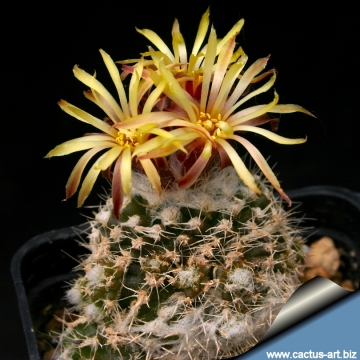 Eriosyce laui Photo by: Cactus Art
Eriosyce laui Photo by: Cactus Art Eriosyce laui Photo by: Cactus Art
Eriosyce laui Photo by: Cactus Art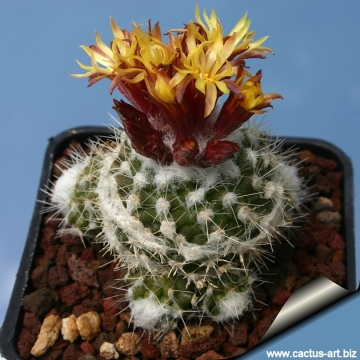 Eriosyce laui Photo by: Cactus Art
Eriosyce laui Photo by: Cactus Art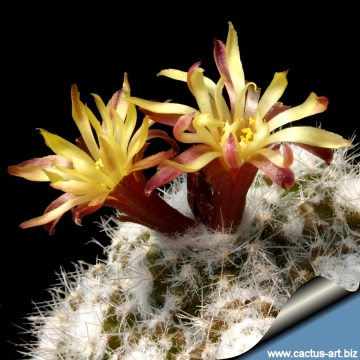 Eriosyce laui Photo by: Cactus Art
Eriosyce laui Photo by: Cactus Art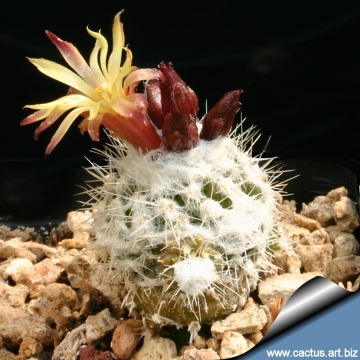 Eriosyce laui Photo by: Cactus Art
Eriosyce laui Photo by: Cactus Art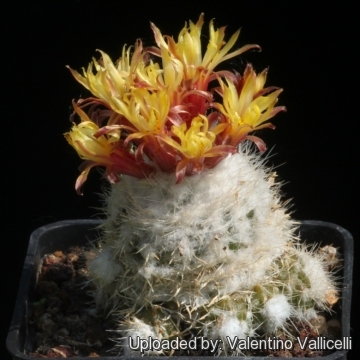 Eriosyce laui Photo by: Valentino Vallicelli
Eriosyce laui Photo by: Valentino VallicelliCultivation and Propagation: They are extremely susceptible to over-watering, and are said to be very slow from seed. They are commonly seen grafted to avoid root rot problems, and in order to speed growth.
Frost Tolerance: Likes warmth (recommended minimum winter temperature 5° C). But a plant kept perfectly dry can easily survive at winter night temperatures below 0° C .
Sun Exposure: Suited for sunny, bright exposure; it can tolerate light shade. Suited for airy exposures.
Pests & diseases: E. laui is particularly prone to rot, therefore, underpot in a smaller container filled with very porous compost.
Propagation: Seeds or graft. Seeds can be sown in the spring or summer. The seedlings should not be disturbed until they are well rooted, after which they can be planted separately in small pots. This plant is frequently grafted on Pereskiopsis as a tiny seedling, which has an accelerated growth rhythm.
















